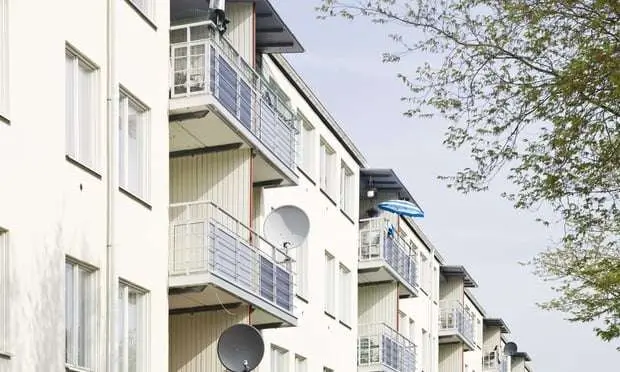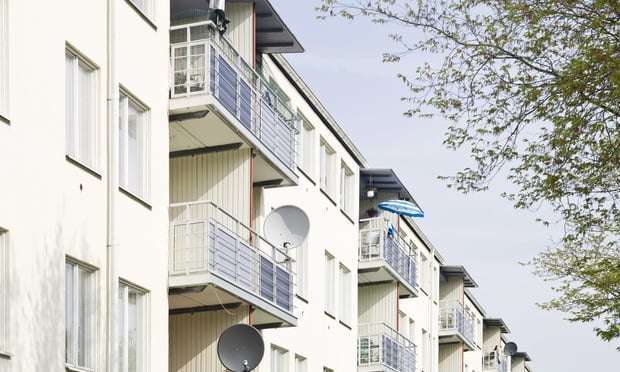
How Inflation Affects Commercial Real Estate
Multifamily, retail, office, industrial. How do you see each one of these being affected in this high inflationary environment with low credit and hard financing?
eXp Commercial Economist KC Conway Offers Insight and Tips on How to Pivot During Strong Economic Headwinds
As the U.S. confronts inflation and, increasingly, signs of a recession, eXp Commercial called on economist and futurist KC Conway for his take on what’s ahead. With 2022 Q4 in the headlights, and instability forecasted for 2023 and beyond, Conway delivers a master class on current and coming market conditions. His advice serves as a blueprint for all real estate agents – commercial and residential – on signs to look for and steps to take to navigate strong economic headwinds.
The following are key excerpts from this dynamic Q&A between eXp Commercial President James Huang and KC Conway:
There’s No Sugar-Coating It: A Challenging Period Is Ahead
The Federal Reserve is in panic mode on inflation. The inflation metrics are all coming in hotter and indicators for inflation are double the expectation at 8.5%. It would be a lot worse if we hadn't tapped the strategic petroleum reserve to bring gas prices down.
But inflation is not abating, mortgage rates have risen to 7%, throwing cold water on the residential real estate market. On the commercial side, banks are essentially being told by the Federal Reserve to quit lending. So you’re starting to see deals being canceled.
“I think we face a very, very challenging fourth quarter ahead of 2023. We're going to have to dust off some skills that take us back to the 1980’s. How do you finance and get the market moving in a high inflationary market?
“This is only about the fifth time since post-World War II that the global GDP is down to the 2% range. Each of those times have been very serious times not only for the global economy but for us here in the U.S. So the kind word to say is ‘it is not great.’ ”
Inflation Impacts Urban Retail Most, Multi-family Least
Residential real estate leads in a recession and commercial real estate follows because they are dependent. And right now “the rooftops” of residential real estate are telling us their problems.
So commercial lags. We're just starting to see all of the commercial property price indices starting to turn downward. In fact, they essentially were about 0% in the latest month. Other takeaways:
- Urban areas that have not gone back to work at 50% post-pandemic are being hit harder. That’s the barometer for a better urban commercial retail market: Workers back to the office at over 50%.
- The office is healthy in the suburbs. Smaller chunks of office space and adaptive re-use of a branch bank to an office building, for example. Smaller chunks of about 4,000 to 6,000 square feet where employees can come in, meet with a client, it’s in and out.
- Big pension funds are starting to sell their office assets. They've already lost 15 to 20%. They don't want to lose 40% so they're moving aggressively to try to sell. That will be interesting to see how that plays out.
Suburban Commercial Markets Can Better Sustain Inflationary Forces
There is a term influence density. It’s where you have density of housing in the suburbs where the houses are actually occupied, and you have households that have good jobs. People can work and they’re doing pretty well. It’s in those pockets where you can do quite well in retail.
Supply Chain Rebuild Helps Defy Inflation in Certain Corridors
A shift is taking place from a West Coast-centric model to a supply chain that moved to Chicago and the East, and to a more North-South concentration. The Port of Savannah and other East Coast, Gulf Coast and South Atlantic ports are seeing great expansion of ships and goods.
Long Beach and Los Angeles used to dominate but that’s not the case now. We’re seeing shippers use the Panama Canal and come into Savannah and Charleston. We’ve also seen New York overtake California ports as the busiest container port in North America.
Additionally, those container ships are leaving East Coast ports loaded with grains, agricultural goods, durable goods and manufactured goods. That mitigates shipping costs vs. 60% of ships leaving California ports empty.
Highlights of Commercial Sectors That Can Do Well in 2023
- The efficiency of e-commerce facilities as big as 1 million square feet can close a 100 stores. That’s the metric that moves the needle as they build more of these.
- Multifamily is going to stay strong. The reason being, it now costs over $300,000 a unit to build a new stick-built apartment. Three years ago, that was the median price of a single-family home in the United States.
Housing Shortage + Young Workforce = Need for Housing Innovation
The young workforce – the Millennial workforce, the Gen Z – cannot buy housing. They have student loan debt. They don't have the credit. They don't have the cash savings, and they can't afford a 7% mortgage.
We're going to have to see some innovation on the mortgage side to bring them into housing. The supply will add maybe 450,000 to 470,000 new apartments this year, and that'll be a record since the 1980.
But if you look at the top 50 markets, that's a thousand units that does not make a dent in the supply shortage. So rents are going to continue to rise 6-8% and 10-12%, especially in markets like Texas and Florida and other inland markets where the workforce is going.
The Home-Building Industry Is In a Full-Out Recession
“They are shut down. They can't sell the homes because of the mortgage rates. They can't build them at the cost and the price point that work. So housing is completely shutting down. Look at the big public builders, especially with a lot of speculation inventory. They're in a lot more trouble.”
Foreign Money Will Continue to Flow to the U.S.
The United Arab Emirates, Israel, South Korea continue to look to the U.S. for cash, 401K and other asset investments. They are in a position to buy for cash deals that are falling out of escrow here.
“What's happening is that with our stronger dollar and because we're raising interest rates … our 4% looks very attractive to other parts of the world paying 1% or less. So we're seeing more of that money go into U.S. dollar denomination, and that further drives the demand for U.S. assets with such a strong dollar.’’
The Fed Needs to Be Careful With Europe
Conway on Europe’s woes: Europe is going to be very, very challenged. They're looking. Where can they go to a safe haven? They're going to have a tough winter this year with the energy issues and companies having to idle plants.
“The Fed has put the UK in the same position that we were in in 2008 and Lehman Brothers. They've locked up the capital market side, so we better be careful because Europe is a very important customer and ally for us. The Fed needs to take on a third mandate, which is do not destroy Europe.”
There Will Be No Soft Landing
There’s a lot of talk about a soft landing, about whether or not we’re already in a recession. There’s talk about two more quarters before some of these measures start to unwind inflation and housing costs. That’s not going to be the end of it.
“I don't think a soft landing is in the cards, and anybody that keeps talking about it, I think they're being very disingenuous to be honest with you.’’
Steve Forbes in the 1970s invented a phrase called the “Misery Index.” He took unemployment and inflation and put them together and we got to a peak of about 13%. That formula has been modernized. They added the S&P 500 because now almost 60% of American households own stock in some capacity.
“Right now, you end up with a Misery Index of 29 compared to 13 in the 1970’s.”
What the Federal Reserve does in November and December, and depending on whether energy costs go back up after the November midterm elections, and what kind of increase there is in unemployment:
“I think there is more pain ahead. There will be no recovery in 2023. We can get a real shock in mid-2023 and see we’re now 6-8 quarters into negative GDP. We’ll see the damage we've done to the housing industry, which is 40% of our GDP. We’ll see the damage we’ve done to our retail industry and to the consumer.”
“Maybe at that point both political parties in this country will come together and say we’ve got to deal with this. Maybe they put things in place in early ‘24 or late 2023 to give us some hope. But the best case is the second half of 2024, but I honestly think we’re really at the year 2025 or 2026 before we start to see recovery.”
Conway’s Suggestions on Safe Places to Go and Opportunities
- REITS
- Workforce growth in places where companies are relocating: Tractor Supply in Little Rock, Arkansas; Hyundai going into Montgomery, Alabama.
- Florida: The rebuilding is going to be phenomenal.
- The Carolinas continue to be strong. Toyota, EV batteries, high tech, biosciences.
- South Korea and Vietnam are moving manufacturing away from North Korea due to threats to U.S. plants.
What eXp Commercial Agents Can Do In the Meantime
- Clean energy: Investigate states that have passed property assessment for clean energy. These assessing authorities have capital to tap for updating HVAC and other energy-efficient improvements.
“Those underutilized or vacant retail or restaurants that – if you had a little bit of capital and you could cloak it under a clean energy upgrading for efficiency. You can get all the capital, fix the building, never have to go to a bank and get turned down or wait six months”
- Reassessments: Big box retailers finally realized they're not worth 200 bucks a square foot, and the assessments are now in the $50 to $75 square-foot range. They're coming after the big industrial buildings and e-commerce. They're coming after the full-rent subdivisions and self storage, which was up 60%. So that’s going to be another pivot.
- ESG pressure: Every public company has to get an ESG score. They have to show what they’re doing. They have to deploy capital. An organization’s ESG score is a measure of how the company is perceived to be performing on a range of environmental, social and governance (ESG) criteria.






